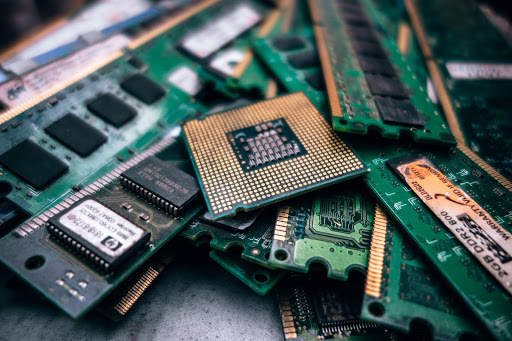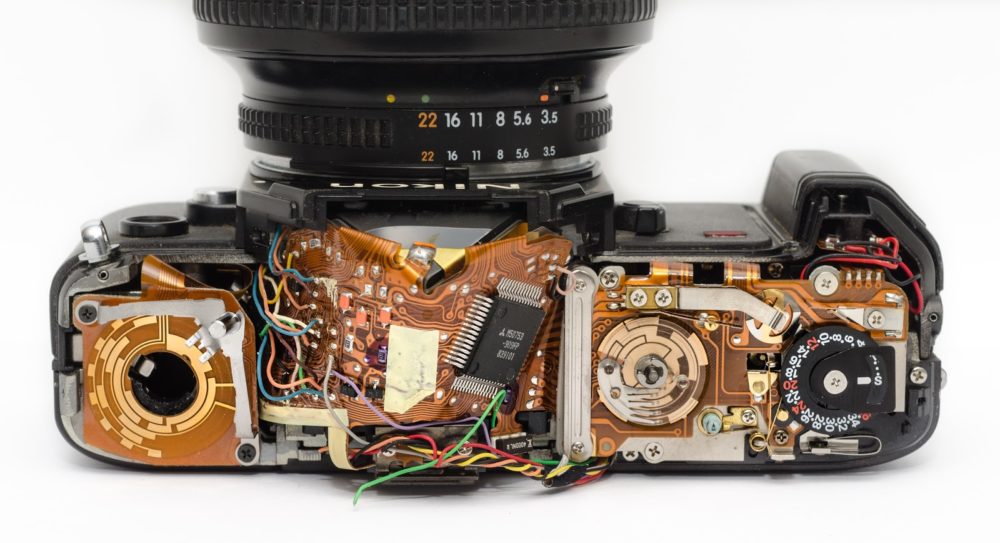So why is it important to recycle e-waste? There are plenty of good reasons to start recycling your e-waste today.
Recycling is a form of behavior, much like exercising and healthy eating. Some people remain more committed to carrying out these goals than others.
But one thing we do know is that recycling is, much like exercising and healthy eating, something most people endorse, at least in concept. The vast majority of people seem to accept the idea that if you take things that you no longer want and recycle them instead of tossing them in the trash, that has environmental and ecological benefits.
When Ipsos Public Affairs conducted a survey on why people don’t recycle, only 3% of respondents said they don’t feel like their recycling efforts will make a difference, and just 2 percent said they don’t think much about recycling or don’t think it’s important.
But more than double that amount – 6% – said something entirely different. They don’t recycle, they said, because they were not sure what is recyclable, and what isn’t.
And that’s a key finding that says a lot about not only why recycling rates have remained stagnant – but what can be done to improve them. Educating people about the rewards of recycling (such as saving the earth) are important. But so is a far more practical and common-sense discussion: informing people about what items they’re now discarding that can and should get recycled.
And that’s particularly true for one of the most pressing concerns about recycling: the need to increase recycling rates for used electronics, which are becoming a major environmental concern as the amount of discarded electronics skyrockets every year across the globe.
What Defines E-Waste?

When the word “recycling” gets mentioned, people often think of soda cans, water bottles, cardboard boxes or newspapers – common household items. What they might not immediately think of is a whole host of other items – including toothbrushes, eyeglasses, toilets and pharmaceutical drugs. The list goes on and on.
And we want to recycle each one of these items to avoid an ecological disaster in our landfills, which could happen if everything we toss out ends up in a landfill. We need to recognize the contribution that recycling makes to helping us manufacture new products from the parts of older ones.
Another item that belongs on the list is something else: electronics. They’re one of the things we want to be absolutely certain we recycle because the environmental risks otherwise are quite serious. We know that used electronics contain toxins like mercury and lead. These toxins, if disposed of improperly, can contaminate our soil and water, proving deadly to both humans and wildlife. Recycling keeps devices (with deadly toxins) out of landfills and ensures the valuable parts within them can be reused to make new products.
But what a lot of people may not know is how many different electronics fit into the category of “recyclable.”
But it’s very consequential that the word hasn’t gotten out about how many different things can be recycled, or about the extensive definition of e-waste. Americans alone throw away 9.4 million tons of electronics each year, making the U.S. No. 1 worldwide for e-waste produced annually. And far too many Americans simply don’t know what e-waste is, how it gets defined, and what should be recycled.
It’s important to educate the public on these matters.
It’s also important to note that some states, like New York and California, ban e-waste from going into community landfills and mandate recycling instead because of the environmental concerns.
So what is e-waste exactly?
E-waste is discarded electronics that have the potential of harming our ecosystem if they’re improperly disposed of, and it should also be noted that electronic waste is one of the fastest growing segments of our nation’s waste stream. It literally encompasses any electronic device that’s broken, can no longer be used and has become outdated or obsolete.
And in an era when technology continues to improve virtually every electronic device that consumers own because we know the number of devices we discard every year will keep rising.
New York has specifically made it illegal to throw away devices that contain those environmentally toxic materials. That includes flat-screen televisions, monitors, computers, laptops, mice, keyboards, small servers, printers and scanners, tablets, MP3 players, VCRs, DVD players, fax machines, video game consoles, and cable/satellite boxes.
E-waste can also include cell phones, smartphones, pagers, stereos, radios, landline telephones, cameras, and CD players. And as electronics manufacturers get more sophisticated, recent additions to the list have included all smart devices, from iPhones to iPads, Apple Watches, Fitbits, Kindles, Nooks, and Amazon Fire Tablets; Virtual Reality (VR) gear; Virtual Assistants; Electric scooters; and more.
As soon as a new device lands on the market, you can be certain that within months, a new and ever more innovative model will be released, tempting us to replace the now-outdated version.
What are Other Examples of E-Waste?

E-waste isn’t limited to devices we use for Google searches, exploring the Internet, and sending out messages, and other types of ICT (Information and Communications Technologies) and telecommunications equipment.
The definition can include office electronics like photocopying equipment and pocket and desk calculators, or automatic dispensers for hot drinks, bottles or cans, and ATMs.
The list includes large household appliances like refrigerators, freezers, washing machines, dishwashing machines, microwaves, electric heating appliances, electric hotplates, electric radiators, electric fans, air conditioner appliances, and exhaust ventilation.
Smaller household appliances would also fit in, such as vacuum cleaners, carpet sweepers, water dispensers, toasters, fryers, electric knives, clocks, hair dryers and sewing machines. The list includes the way we light our homes, including fluorescent tubes, compact fluorescent lamps, and high intensity and discharge lamps.
Head outside to your tool shed. You’ll find more items in there, including equipment for milling, sanding, grinding, sawing, cutting, shearing, and drilling – or tools for welding, soldering, mowing or other gardening activities.
If you have children, chances are they own items on the list, whether it’s electric trains or car racing sets, hand-held video game, and sports equipment with electronic components.
If you’ve been to your doctor’s office lately, chances are your doctor’s office includes medical equipment on the list, such as scanners, stethoscopes, pulmonary ventilators, and equipment for radiotherapy, cardiology, and dialysis.
That’s a long list, and it keeps getting longer as manufacturers continue to invest in “smart technology” that literally allows machines to do what we used to do by hand. And the one thing that links these consumer and business electronic equipment is that we no longer want it – the product is considered to be near or at the end of its useful life.
If you can plug it into an electrical outlet or it contains circuit boards or chips, it’s probably e-waste.
In order to reverse the negative global impact that e-waste has on our environment when it takes up space in a landfill, recycling has become a clear solution. Too often electronics seem harmless to people on the outside because they can’t see the potentially harmful components within them, like cadmium, beryllium, arsenic, or brominated flame retardants. Exposure to any of them can be dangerous.
We also know that if electrical and electronic products are disposed of in landfill sites, millions of tons of valuable materials that could be recovered and reused for new products that are lost.
Something else to keep in mind: 18 months. That’s how short the average American keeps a cell phone.
Why is it Important to Recycle E-Waste?
It’s important to keep reinforcing that message. Tossing out electronics instead of recycling them does more harm than good.
The solution is to turn those devices over to an experienced firm like Great Lakes Electronics Corporation, which has years of experience performing environmentally friendly recycling of electronic products.
The team at Great Lakes Electronics Corporation will disassemble these items into component parts, and the ones that still have value can be sold for reuse. Other parts are used for metals recovery. Everything within your devices gets recycled.
To learn more, contact Great Lakes Electronics Corporation at 888-392-7831 today.

